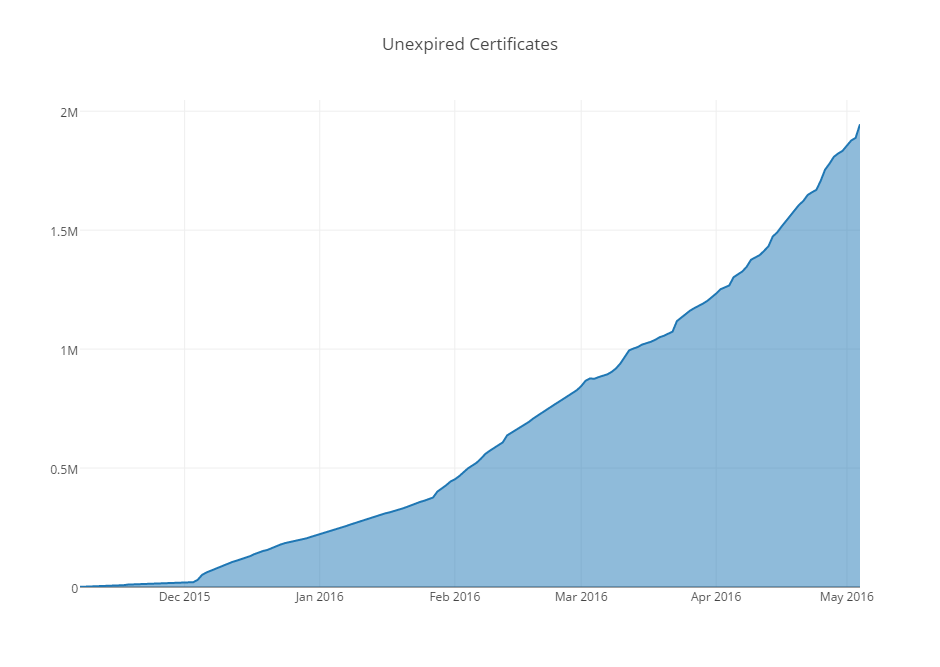Let’s Encrypt announced this week that they’d passed the 100 million certificates issued threshhold,
Let’s Encrypt has reached a milestone: we’ve now issued more than 100,000,000 certificates. This number reflects at least a few things:
First, it illustrates the strong demand for our services. We’d like to thank all of the sysadmins, web developers, and everyone else managing servers for prioritizing protecting your visitors with HTTPS.
Second, it illustrates our ability to scale. I’m incredibly proud of the work our engineering teams have done to make this volume of issuance possible. I’m also very grateful to our operational partners, including IdenTrust, Akamai, and Sumo Logic.
Third, it illustrates the power of automated certificate management. If getting and managing certificates from Let’s Encrypt always required manual steps there is simply no way we’d be able to serve as many sites as we do. We’d like to thank our community for creating a wide range of clients for automating certificate issuance and management.
The press release also notes that when Let’s Encrypt began issuing certificates, Firefox’s Telemetry report found that
. . . less than 40% of page loads on the Web used HTTPS . . . In the 19 months since we launched, encrypted page loads have gone up by 18%, to nearly 58%.
A very good trend.

